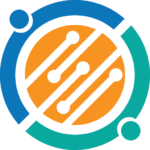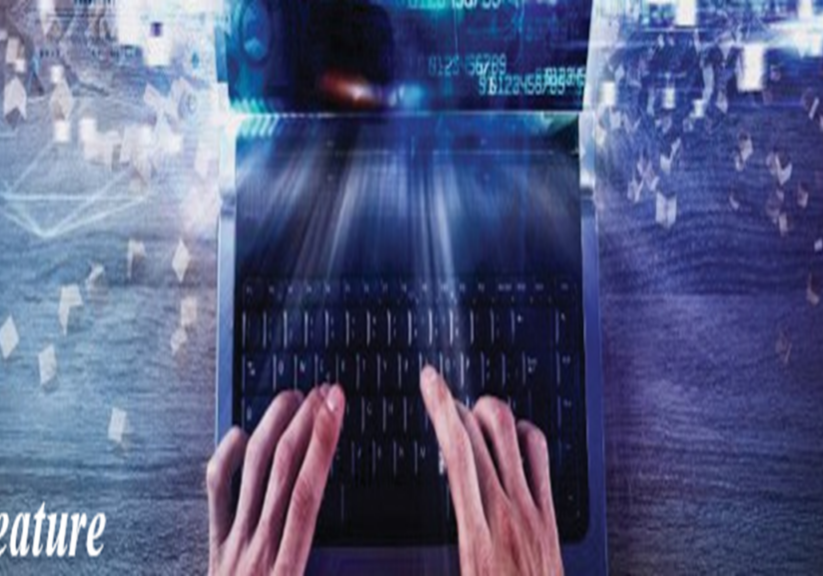Artificial intelligence has left the laboratory (and the movie lot) and is in your building. It’s in your home. It’s in your office. It’s pervading all the institutions that drive our global economy. From Alexa to Nest to Siri to Uber to Waze, we are surrounded by smart machines running on incredibly powerful and self-learning software platforms. And this is just the beginning.
To date, we’ve been enjoying—without even really noticing—various forms of “weak” artificial intelligence (AI). It’s how Amazon recommends just the right gift. How Netflix suggests the perfect film for your Sunday evening. Or how Facebook fills your newsfeed. These forms of AI have been welcome little helpers, making our days just a bit easier and more fun. Once we start using them we stop thinking about them. In just a few short years, these machines have become almost invisible to us in our personal lives.
Now AI is transitioning from being our little daily helper to something much more powerful—and disruptive—as the new machines are rapidly outperforming the most talented of us in many endeavors. For example:
- Games of intellect: AI platforms can now out-compete us at some of our most challenging games: Jeopardy, Chess and Go. Google’s AlphaGo beat world champion Go player Lee Sedol by a score of 4-1 in March 2016. A convincing win, but not a rout. Yet with the current rate of technological advancement, in just a few years it will be inconceivable for a human to beat the new machines in such games of the mind.
- Driving: The driverless car, while still relatively nascent, is already a better driver than the average person. According to a Virginia Tech study, human-driven vehicles are involved in 4.2 crashes per million miles vs. 3.2 crashes per million miles for the automated car. This disparity in safety will undoubtedly grow considerably in the next few years, and driverless cars—which never text behind the wheel or drive drunk—may soon become mainstream.
- Trading: In 2015, six of the top eight hedge funds in the U.S. earned around $8 billion based largely—or exclusively—on AI algorithms. The machine has already won in stock-picking.
- Healthcare: In medicine, the new machine is quickly surpassing the capabilities of human radiologists (editors note: see ‘Trading Cancer for Data: Machine-Learning for Cancer Diagnosis’ in this issue). Researchers at Houston Methodist Hospital utilize AI software which interprets results of breast X-rays 30 times faster than doctors and with 99% accuracy. By contrast, mammograms reviewed by humans result in unnecessary biopsies nearly 20% of the time.
We could go on and on with many more examples, but the point is clear: the new machines have already surpassed human capability in many ways today. And with the geometric growth in the power and sophistication of these platforms, this is only a preview of coming attractions.
Thus, this rapid expansion of AI leads us to ask some big questions:
- Will a robot take my job away?
- Will my company be “Ubered”?
- What will my industry look like in 10 years?
- Will my children be better off than I am?
Like It or Not, This Is Happening
What the World Economic Forum hailed in 2016 as the Fourth Industrial Revolution is now upon us: a time of economic dislocation—when old ways of production give way to new ones, and when those who can harness the power of the new machine will harvest the bounty of economic expansion. In the same manner that the First Industrial Revolution was powered by the invention of the loom, the second by the steam engine, and the third by the assembly line, the fourth will be powered by machines that seem to think—what we refer to as “systems of intelligence.”
As such, whether you are managing a large enterprise or just starting your first job, deciding what to do about the new machine—this new cocktail of AI, algorithms, bots, and big data—will be the single biggest determinant of your future success.
Digital that Matters
For the past decade, we’ve collectively enjoyed “digital that’s fun.” We’ve seen the incorporation of Twitter (2006), the introduction of Apple’s iPhone (2007), and Facebook’s IPO (2012). These companies—along with others, such as Google, Netflix, and Amazon—have been able to generate unprecedented commercial success in terms of customer adoption, daily usage, and value creation, by changing how we communicate and socialize. Yet, history will note that we started the digital revolution with the amusing and the frivolous: Facebook posts, Twitter feeds, Instagram photos. We are using the most powerful innovations since the introduction of alternating current to share cat videos, chat with Aunt Alice, and hashtag political rants. However, that’s just the warm-up act, for we haven’t yet begun to fully realize the potential of the new machines.
Technology writer Kara Swisher summed it up best when she said, “In Silicon Valley, there’s lots of big minds chasing small ideas.” Well, we’re entering an era of big brains focused on big ideas—digital that matters: using these technologies to transform how we are educated, fed, transported, insured, medicated, and governed.
While companies like Facebook, Amazon, Netflix, and Google (sometimes known as the FANG vendors) seem to have established themselves as the presumptive and eternal winners in this space, history will likely remember them as the precursors to a much more momentous and democratic economic shift. The next wave of digital titans probably won’t be characterized by startups from Silicon Valley; instead, it will be made up of established companies in more “traditional” industries—in places like Baltimore, Birmingham, Berlin, and Brisbane—that figure out how to leverage their long standing industry knowledge with the power of new machines.
We’re starting to see this play out as we collectively work to apply systems of intelligence to help address some of our most vexing societal ills in areas where digital technology is not just entertaining or convenient but also life-altering. Certainly, many of our institutions—the pillars of our society and our everyday lives—are ripe for improvement.
For example, worldwide we lose 1.2 million lives to car accidents annually, with more than 94% of these accidents a result of human error. In the U.S. alone, these wrecks cost society over $1 trillion. This is nearly one-third the amount the U.S. federal government collects in individual income taxes. Driverless cars promise to save countless lives and heartache.
Medical misdiagnosis could also plummet. Right now, 5% to 10% of trips to the ER results in a misdiagnosis. More than 12 million diagnostic mistakes contribute to 400,000 deaths caused by preventable errors each year … and that’s just in the U.S. Applying data to the diagnostic process could dramatically improve patient outcomes.
The U.S. spends more per student on secondary education than most other countries in the world but generates mediocre results. In a recent international study, American students achieved scores far below those in many other advanced industrial nations in science, reading, and math. By tailoring lessons to the individual learning style of each student through technology, we could make the education process radically more productive and effective for both students and teachers.
These are the sorts of big things that we can address with the new machine. It’s digital with purpose, digital that matters. And the big brains bringing these innovations forward will not necessarily reside in Silicon Valley or an MIT dorm room. They may well be sitting in an office down the hall at your company.
For example, McGraw-Hill Education is applying new technology to help teachers and kids improve learning with a system called ALEKS. The artificially intelligent Assessment and LEarning in Knowledge Spaces system uses adaptive questioning to quickly and accurately determine exactly what a student knows and doesn’t know in a course. ALEKS then instructs the student on the topics he or she is most ready to learn. As the student works through a course, ALEKS periodically reassesses the student to ensure retention. All of this results in more flexible, one-on-one instruction for students, which boosts student success. And for teachers, ALEKS helps take over some of the more routine—and, let’s say it, boring—work to allow them to focus more intently on working with students.
Another example can be seen at Discovery, one of South Africa’s leading insurers, which uses its Vitality platform to provides economic incentives—discounts on travel, entertainment, healthy food, gym memberships, sports equipment, health products, etc.—to its members based on whether they participate in healthy behaviors. Members earn points by logging workouts with connected fitness devices and purchasing healthy food (also logged by swiping their Vitality card). The insurance sector may not be known as a hotbed of innovation, but Discovery has built a thriving business based on the value derived from the new machine.
Examples like these are about to be replayed a thousand-fold across all sectors of our economy. So the question becomes: Will you play, or stand on the sidelines?
But Will I Be Automated Away?
We have already proven that we love to consume AI-based products (with our rabid usage of the FANG vendors’ offers on our smartphones). Yet once we get over our initial awe of the new machine, we start to wonder how it will impact jobs. What will happen to all those bankers, drivers, radiologists, lawyers, and journalists? What will happen to … me? Will a robot take my job?
Many of us don’t know if this Fourth Industrial Revolution is very good or very bad. It all starts to feel like a capitalist’s dream … but a worker’s nightmare. And the uncertainty is creating a palpable sense of anxiety, for at a personal level, many of us don’t know what to do about it.
Some see only the dark side of this shift, and indeed, many of today’s headlines forecast a grim future in a “jobless economy” as robots take over our livelihoods. But the coming digital boom and build-out will be highly promising for the prepared. In fact, it will usher in once-in-a-century growth prospects as we re-engineer our infrastructure, our industries, and our institutions. Similar to the prior three industrial revolutions, this one will steamroll those who wait and watch, and will unleash enormous prospects and prosperity for those who learn to harness the new machine.
All of this depends on what you do now to prepare for an era when machines can potentially do nearly everything related to knowledge work.
Will many jobs be “automated away” in the coming years? Yes. However, for the vast majority of professions, the new machine will actually enhance and protect employment. We don’t think, for example, that a single teacher or nurse will lose their job due to artificial intelligence. Instead, these professions will become more productive, effective … and enjoyable. Additionally, entirely new professions will be created, driving employment in fields we can’t currently envision (imagine trying to describe a “database administrator” to somebody in 1955). We have much to look forward to … if we understand exactly what the new machine can and cannot do, and how it will impact the future of work.
Getting AHEAD in the Age of the New Machine
We believe there is a structured approach for moving forward in this age of confusion, peril, and reward. We call it the AHEAD model, which we have developed after working with many Global 2000 companies at the vanguard of digital transition.
The acronym stands for:
- Automate: Outsource rote, computational work to the new machine.
- This is how Netflix automated away the Blockbuster retail store, and how Uber is automating away taxi dispatching.
- Halo: Instrument products and people and leverage the data exhaust they generate through their connected and online behaviors (what we call Code Halos) to create new customer experiences and business models.
- General Electric and Nike are changing the rules of the game in their industries by instrumenting their products, surrounding them with halos of data, and creating new value propositions and customer intimacy.
- Enhance: View the computer as a colleague that can increase your job productivity and satisfaction.
- The GPS in your car currently enhances your driving—keeping you on the fastest route, alerting you of road hazards, and ensuring that you never get lost. In the coming years, entire vocations—from sales to nursing to teaching—will be revolutionized with the power of computer-based enhancement.
- Abundance: Use the new machine to open up vast new markets by dropping the price point of existing offers, much as Henry Ford did with automobiles.
- Discovery: Leverage AI to conceive entirely new products, new services—and entirely new industries.
- As Edison’s light bulb led to new discoveries—in radio, television, and transistors—today’s new machine will lead to a new generation of discovery and invention.
The first “play outlined in our model —to automate—is the one most prevalent in today’s zeitgeist. Automation has been the initial step in each industrial revolution, as one loom replaced 40 textile workers, or one steam engine had the power of 50 horses. Today, automation will be a similar necessary “evil”—for it’s how you will deliver at the “Google price” in core portions of your company. However, what most market observers miss is that the next wave of automation will pave the way for invention and economic expansion through the four subsequent plays.
This one-two of efficiency plus invention will manifest itself across all industries, and, as outlined above, much of this shift will not be driven by companies started last year—or even 10 years ago—but by companies started by our grandparents. This is because those companies have access to the richest lodes of data—the “fuel” for the new machine.
The title of our new book is, “When Machines Do Everything.” This may sound a bit hyperbolic, and clearly machines will never do everything—and nobody really wants them to. But in the next few years the new machines will be embedded most everywhere and in most everything, and will increasingly do more and more of the work people do today.
Technology is no longer the domain of the few but the province of the many. As such, those who win in the next phase of the digital economy are not those necessarily who can create the new machines, but those who figure out what to do with them. That means you.



